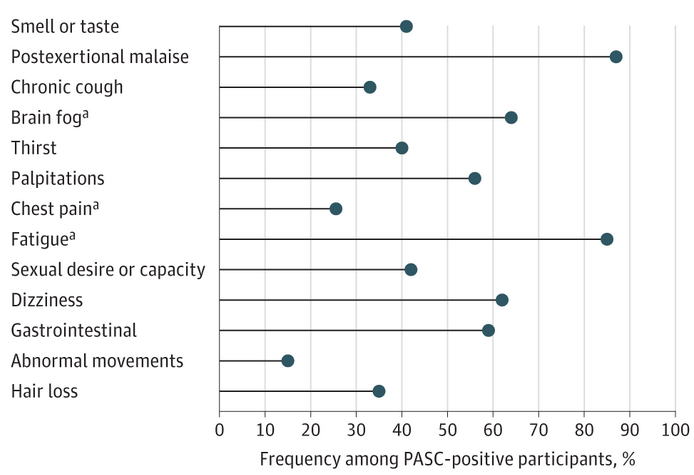12 Most Common Symptoms of Long Covid
/By Pat Anson, PNN Editor
Since the first cases started appearing in 2020, medical experts have been baffled by Long Covid, a poorly understood disorder that causes chronic fatigue, insomnia, brain fog and dozens of other symptoms long after the initial infection with COVID-19.
The symptoms vary so much from person to person that identifying the cause is difficult. Is it Long Covid? Fibromyalgia? Chronic fatigue syndrome? Lyme disease? Or just a bad case of the flu?
A new study led by the National Institutes of Health's RECOVER Initiative has identified the 12 most common symptoms of Long Covid, with the goal of creating a working definition of the condition to help make it easier to diagnose and treat.
"This study is an important step toward defining Long Covid beyond any one individual symptom," said lead author Leora Horwitz, MD, director of the Center for Healthcare Innovation and Delivery Science at NYU Langone Health. "This definition — which may evolve over time — will serve as a critical foundation for scientific discovery and treatment design."
Horwitz and her colleagues studied survey data from 9,764 adult volunteers from across the country. Nearly 90% had been infected with Covid. Some made complete recoveries, while others had symptoms of Long Covid – known technically as postacute sequelae of SARS-CoV-2 infection (PASC). About 23% of participants with a prior Covid infection met the working definition for Long Covid.
The study findings, published in JAMA, examined 37 symptoms across multiple body areas and organs. Researchers then applied statistical analysis to identify the 12 symptoms that someone with Long Covid is most likely to have: post-exertional malaise, fatigue, brain fog, dizziness, gastrointestinal symptoms, heart palpitations, issues with sexual desire, loss of smell or taste, thirst, chronic cough, chest pain, and abnormal movements.
By assigning points to each of the 12 symptoms, researchers gave each participant a PASC score based on their combination of symptoms. Some symptoms appeared at higher rates than others, with malaise and fatigue being the most prominent, occurring in nearly 90% of cases.
Frequency of Long Covid Symptoms
SOURCE: JAMA
"Now that we're able to identify people with Long Covid, we can begin doing more in-depth studies to understand the mechanisms at play," said coauthor Andrea Foulkes, ScD, Principal Investigator of the RECOVER Data Resource Core. "These findings set the stage for identifying effective treatment strategies for people with Long Covid — understanding the biological underpinnings is going to be critical to that endeavor."
The researchers found that Long Covid was more common and severe in participants who were infected before the Omicron strain emerged in late 2021. People who were unvaccinated and those with multiple Covid infections were also more likely to have severe symptoms.
Researchers identified four subgroups of patients with different clusters of symptoms. Some clusters spanned multiple organs, such as the heart, lung and brain, suggesting that a body-wide reaction to the virus may occur in some people with Long Covid.
As of May 2023, more than 100 million Americans have been infected with COVID-19, with experts estimating that about 6 percent of those infected with the virus continue to experience Long Covid symptoms.




